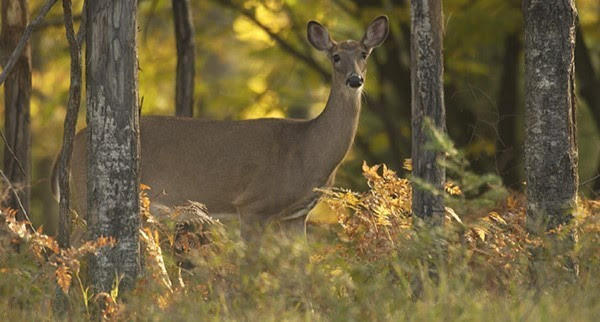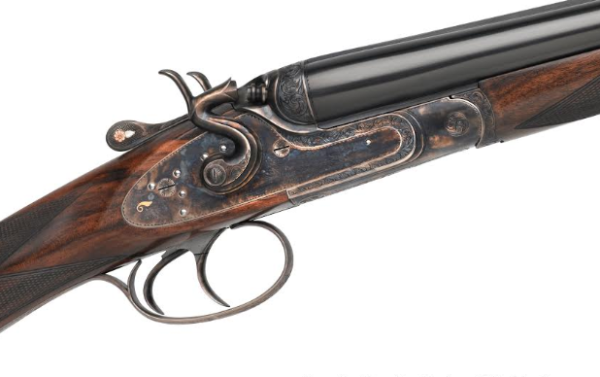Field dress a big-game animal faster, safer and more effectively with the new, patented GutDaddy field-dressing kit. Unlike anything else on the market, the GutDaddy is a game changer, solving the common problems hunters encounter when cleaning a game animal in the field.
 Thoughtfully designed, this compact, all-in-one kit features everything from well-placed posts to secure the animal’s legs in an ideal gutting position, to rib hooks and a set of knives, all secured in a durable scabbard.
Thoughtfully designed, this compact, all-in-one kit features everything from well-placed posts to secure the animal’s legs in an ideal gutting position, to rib hooks and a set of knives, all secured in a durable scabbard.
Bowhunters, rifle hunters, Western spot-and-stalk hunters, Midwestern treestand sitters and every hunter in between will appreciate the GutDaddy’s useful design.

 Pat Palmer, inventor of the GutDaddy and CEO of Dark Moon Hunting, has a passion for hunting and the outdoors and a desire to share that with others.
Pat Palmer, inventor of the GutDaddy and CEO of Dark Moon Hunting, has a passion for hunting and the outdoors and a desire to share that with others.
Palmer designed the GutDaddy out of a desire to make the old field-dressing process safer, faster and cleaner for himself and others.
“I was tired of trying to cut on an animal that was flopping around and not stable,” Palmer said. “I knew there had to be an easier way, and so I began the process of designing the GutDaddy.”
 During creation of the GutDaddy, Palmer focused on making a strong and durable all-in-one case that encompassed everything a hunter would need to get the job done.
During creation of the GutDaddy, Palmer focused on making a strong and durable all-in-one case that encompassed everything a hunter would need to get the job done.
The GutDaddy Case cradles the animal securely in place, the uprights with leg restraints secure the front legs and the one-of-a-kind rib spreaders allow easy access to the animal’s chest cavity. The GutDaddy knife collection includes a high-quality, stainless-steel gutting knife with gut hook, a knife for caping and skinning and a handy folding bone saw, all conveniently stored in a custom heavy nylon scabbard.
 “In addition to making the field-dressing process easier, safer and faster, the GutDaddy provides a safe way to teach new hunters how to field dress a large animal,” Palmer said. “It also creates independence for physically challenged hunters. Without a doubt, this tool will assist hunters of all ages, all levels of experience and those with physical challenges.”
“In addition to making the field-dressing process easier, safer and faster, the GutDaddy provides a safe way to teach new hunters how to field dress a large animal,” Palmer said. “It also creates independence for physically challenged hunters. Without a doubt, this tool will assist hunters of all ages, all levels of experience and those with physical challenges.”
Each GutDaddy field dressing case comes with a step-by-step guide for ease of use.
For more info, visit GutDaddy.com.


 Thoughtfully designed, this compact, all-in-one kit features everything from well-placed posts to secure the animal’s legs in an ideal gutting position, to rib hooks and a set of knives, all secured in a durable scabbard.
Thoughtfully designed, this compact, all-in-one kit features everything from well-placed posts to secure the animal’s legs in an ideal gutting position, to rib hooks and a set of knives, all secured in a durable scabbard.
 Pat Palmer, inventor of the GutDaddy and CEO of Dark Moon Hunting, has a passion for hunting and the outdoors and a desire to share that with others.
Pat Palmer, inventor of the GutDaddy and CEO of Dark Moon Hunting, has a passion for hunting and the outdoors and a desire to share that with others. During creation of the GutDaddy, Palmer focused on making a strong and durable all-in-one case that encompassed everything a hunter would need to get the job done.
During creation of the GutDaddy, Palmer focused on making a strong and durable all-in-one case that encompassed everything a hunter would need to get the job done. “In addition to making the field-dressing process easier, safer and faster, the GutDaddy provides a safe way to teach new hunters how to field dress a large animal,” Palmer said. “It also creates independence for physically challenged hunters. Without a doubt, this tool will assist hunters of all ages, all levels of experience and those with physical challenges.”
“In addition to making the field-dressing process easier, safer and faster, the GutDaddy provides a safe way to teach new hunters how to field dress a large animal,” Palmer said. “It also creates independence for physically challenged hunters. Without a doubt, this tool will assist hunters of all ages, all levels of experience and those with physical challenges.”
